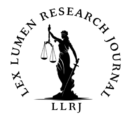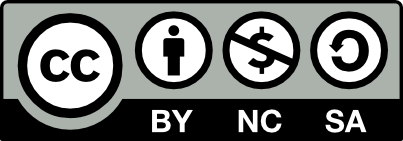-Written by
Rohaan Thyagaraaju from Symbiosis Law School Hyderabad
August 2024
Legal aid has proved to be a critical tool in the Indian setting, providing justice to those who would not otherwise receive it. It has provided hope to the so-called ”minorities,” the hapless and powerless individuals indicted by the system. The assistance of laws in India has come a long way since its inception. It tries to offer people with less money or power a fair chance. This notion was conceived in 1987 when the government passed the Legal Services Act, establishing a nationwide network of legal aid organizations[1].
Incidentally, the Hussainara Khatoon vs. the State of Bihar (1979) case highlighted the suffering of jailed persons who have not been taken through trial[2]. Some include the High Court, where free legal assistance was declared a constitutional right by referring to Article 21 of the law, which led to the release of about 40,000 convicts. Moreover in the case Khatri v. State of Bihar (1981), the Bihar High Court added that the role of a judge is to enlighten the accused person on the availability of counsel. This was helpful to many because they could not afford to hire an advocate before, and most of the time, it was costly. The Supreme Court case “Sheela Barse v. State of Maharashtra” (1983), which was about women’s rights in prison categorically mentioned that women must be informed of their rights when arrested, and all female detainees must receive free legal representation.
However, in 2022, the Supreme Court developed an access to Justice application to help people get legal aid. This has been of great help in the arrangements for access to support, especially in the rural setting. Similarly, improving legal aid in India also helped establish education institutions, people’s courts where people arbitrate their issues without going to war, and support for people, especially the aged, children and victims of human trafficking.
Even if there are still some challenges, these real-world cases and initiatives demonstrate the evolution of legal assistance in India and the goal of making things fair for everyone, regardless of income.
[3]However, the underlying question is: Is free legal assistance genuinely free?
Legal aid has assisted in preserving the rights of India’s LGBTQ community. In one of 2018’s landmark decisions, the Supreme Court overturned a colonial rule prohibiting same-sex relationships. Legal aid was provided to the petitioners, ensuring their issues were addressed. It proves that legal aid has transformed the Indian judiciary by enabling persons from underprivileged backgrounds to obtain justice. It began with the incorporation of Article 39A into the Constitution in 1976[4], providing free legal help to everybody to provide equal protection under the law.
The Legal Services Authorities Act of 1987 increased legal assistance arrangements by establishing a nationwide network of legal service authorities. This approach has given millions of disadvantaged Indians the ability to interpret legal procedures and has broadened the judiciary’s scope in numerous ways. This right is guaranteed in the Constitution and is critical to ensuring justice for all. This essential certainty, however, is only sometimes the case, as demonstrated by the following instances. Unfortunately, many people needing a lawyer’s services cannot obtain them for the following reasons.
That is why another issue with the legal aid system exists: A need for more public recognition. Many people who want the services of an advocate should be informed that this service is free, or they will be unsure where to obtain it. This lack of understanding may discourage people from obtaining legal assistance when it is most required, resulting in a scenario in which justice is limited to those who can afford it. Last but not least, there is a significant backlog in India’s legal help system due to extensive bureaucratic procedures and delayed functioning.
When law seekers consult with lawyers, they are confronted with a convoluted and frequently perplexing structure that can be intimidating even for novices. This could slow the process of receiving legal assistance, which is especially devastating when time is of the essence[5]. In one such event in Bihar, a man named Satyendra Dubey was slain for reporting corruption in the construction of national highways [6].
It would not have existed had the National Human Rights Commission(NHRC)not provided legal assistance to Dubey’s family. Their help ensured that this case reached the Supreme Court, where numerous persons were detained and charged with murder. Similarly in yet another case, Soni Sori an Indigenous Adivasi schoolteacher was detained on bogus c[7]harges that she had contacts with Maoists. Sori was tortured and raped by the police, but she refused to surrender to their pressure. She sought the help of legal lawyers and was vindicated of all the wrongs.
We do realize that two-thirds of black women are victims of police brutality and violence. Legal aid in India is significant in providing citizens with a fair shot in conflict resolution systems. The Legal Services Authorities Act of 1987 established the policy framework for free legal assistance; however, issues have arisen over its successful implementation.
In the Indian context, self-representation needs more experience and motivation. Hence, multifarious clients need more representation. In contrast to the claims of “free” legal service, beneficiaries frequently incur extra incidental fees related to the execution of their service. Another downside of the system is its various bureaucratic barriers; for example, it can take months to receive permission for a legal aid program. However, civil law legal aid is not widely recognized, and those aware of it do not use it, particularly in rural areas. However, the existing state of legal aid in India is far from satisfactory, and any romantic vision is a façade. Some experts opine that they have never seen lawyers overburdened by their caseloads; they are assigned so many cases that they cannot dedicate appropriate time to each client.
There have been cases of embezzlement, and some of the lawyers engaged misuse the system or seek a share of the payment from the beneficiaries[8]. Due to resource constraints, requests are sometimes only partially satisfied; for example, labour issues often must be handled. As a result, while legal assistance has theoretically increased the reach of justice, its implementation needs to give adequate legal representation to vulnerable people. The lacunas listed below are a blow to the notion of equal justice in the Indian judicial structure: The disparity between the beneficiary’s experience and the free legal assistance provided is irritating.
Such anecdotes demonstrate the efficiency of Indian legal aid services. It is a power that gives the affected parties hope that justice will be done in their instances. This clearly shows that there is a chance of resolving the matter regardless of the struggle.
These are just a few examples, but hundreds of thousands of other situations could demonstrate the need for legal help in India. As one of the essential branches of the law, it is a critical tool in the battle for justice and protecting society’s most vulnerable citizens.
Conclusion
In the end, while free legal aid is recognized as a constitutional right in India, the reality is substantially different. The current system of legal aid has various obstacles, including limited program resources, low public awareness of the law, and bureaucratic entanglements. Several of these challenges necessitate collaboration among all stakeholders, including the government, legal aid organizations, and society’s legal profession. It means only when civil society institutions work together can such persons receive free legal aid and turn words into reality.
[1] Pathak, Varun, “A Brief History of Legal Aid, available at www.legalservicesindia.com, accessed on 18/12/1
[2] 15Hussainara Khatoon v. Home Secretary, State of Bihar (I) AIR 1979 SC 1360; Kartar Singh v. State of Punjab (1994) 3 SCC 569
[3] Committee on Legal Aid titled as ―processional justice to poor‖ set up in the year 1972.
[4] Article 39A of the Indian constitution.
[5] Justice N.H. Bhagwati and Justice Trevore Harris of Calcutta “Law as struggle:Public Interest Litigation in India”, Rajeev Dhawan Ed.,36 JILI 325 (1994)
[6]https://www.railtel.in/profile-5/pidpi-complaint.html#:~:text=Shri%20Satyendra%20Dubey%20was%20an,Golden%20Quadrilateral%20highway%20construction%20project.
[7]https://www.frontlinedefenders.org/en/case/case-history-soni-sori
[8] 18 Bisnu Prasad Diwedi: Justice Bhagwati and Legal Aid, Cochin University Law Review [1990] p.396


